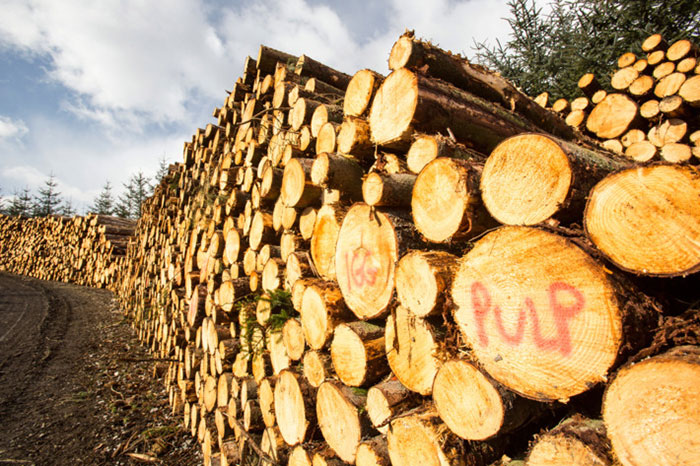wood pulp making
Pulp is not made entirely of wood. Wood pulp is made by wood as raw material. Almost all wood can be made into pulp.
Wood pulp is a pulp made from wood. Wood is a common material for pulp production, such as straw, reed, jute and so on. As the most widely used pulp, wood pulp occupies for 90% of all pulp production according to pulp processing, wood pulp can be divided into kraft pulp, mechanical pulp (also called grout) and fine wood pulp. Cork pulp and hard wood pulp are two kinds. The same type of wood pulp, they have different fibers.
Process of making wood pulp

Wood pulp can be made according to the following steps: first, take out the bark of the wood. The process of removing bark can involve water or not. Bark is usually recycled as fuel for pulp and paper. To separate cellulose fibers from wood, this can be done by grinding wood with a grinder (a huge millstone), and then immersing in water to make a grinding pulp (GW). Mechanical pulp is used in the manufacture of paper products requiring lower strength, such as newsprint and paperboard. Wood can also be powdered with a disc mill and steam at high temperature and pressure to produce (TMP). Hot Grinding Mechanical slurry The quality is different from the grinding slurry.
In addition to disc mills, chemicals can also be used to separate cellulose fibers. The wood pulp produced by this method is called (CTMP). Grinding pulp, hot grinding mechanical pulp and chemical hot mill mechanical pulp are all called mechanical pulp. The mechanical pulp will turn yellow over time due to the presence of lignin in the pulp. Chemical pulp is made by mixing shredded wood chips and chemicals in a large barrel called a cooker. Thermal effect and chemical decomposition of cellulose fibers to bind the lignin without destroying the wood fibers. Liquids containing lignin and other decomposing materials will be dried and used as fuel. Chemistry Award Used to make paper that requires very strong strength, or mixing with mechanical pulp to bring different qualities to the product. Chemical pulp includes Kraft pulp. Pulp can also be made of waste paper and cardboard. Recycled pulp is usually used to make cardboard, newsprint and toilet paper.
Using Kraft pulping, a large number of by-products from the pulping process of dilute black liquor. This liquid contains pulp chemicals and lignin from trees. Lignin has a high heat content, so dilute black liquor (about 15% solid) will be concentrated into thick black liquor (68% to 75% solid) through multi-effect evaporation. The black liquid is burned in a recovery boiler, and chemicals fall into the semi-liquid melt at the bottom of the boiler. Melt flows out of the boiler and is dissolved in water or in dilute detergents to form green liquid. The green liquid should then be clarified. Quicklime (CaO), quicklime will be added to green liquid to make most carbon The conversion of sodium acid (Na2CO3) to sodium hydroxide (NaOH),) clarifies the green liquid into white liquor (causticizing). The white liquor, which contains sodium hydroxide, can be used as a pulping chemical, so it is back to its starting point. The precipitate white mud contains inefficient lime (CaCO3), washed and calcined at about 1800 degrees Fahrenheit (1000 degrees Celsius) to produce quicklime, which can be used again as a clarifier for green liquid.

